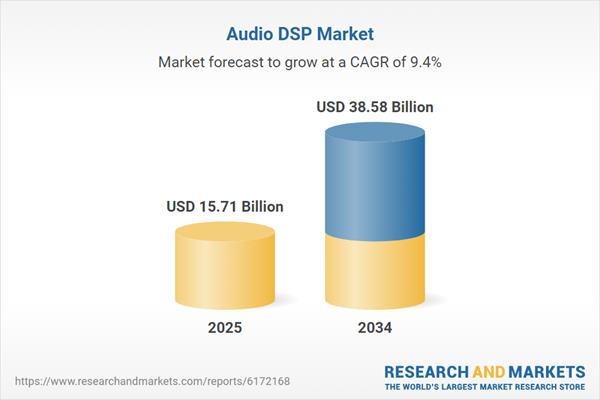Growing Popularity of Integrated Audio DSPs to Bolster the Growth of the Audio DSP Industry
Based on type, the integrated segment accounts for a significant share in the market and is anticipated to witness a considerable growth in the forecast period. Integrated DSPs generate less amount of heat, which enhances the life span of the product. Moreover, they are fast and can convey information with less noise, distortion, and interference.Over the forecast period, the growing awareness about the cost-effectiveness of the product is likely to augment the market growth. Meanwhile, the discrete segment is anticipated to witness a steady growth in the forecast period owing to the changing consumer preference towards DSPs that offer high accuracy. High accuracy and reliability are the biggest advantages of discrete DSPs.
The Asia-Pacific to Provide Significant Growth Opportunities to the Audio DSP Industry
The audio DSP industry in the Asia-Pacific is driven by the growing digitalisation, coupled with the increasing adoption of wireless communication networks in emerging economies of the continent. In countries like India and China, a significant surge in video streaming and the demand for cloud streaming has been observed. This is one of the major factors driving the growth of the audio DSP industry in the region. Over the forecast period, the growing adoption of audio DSPs in the automotive sector is likely to provide a further impetus to the industry.Audio DSP: Market Segmentation
Audio DSP (digital signal processing) is defined as a subfield of digital signal processing that deals with the manipulation of audio signals. Basically, DSP takes the real-world audio and manipulates it based on certain algorithms to achieve some goals, including background noise cancellation.Market Breakup by Type
- Discrete
- Integrated
Market Breakup by End Use
- Laptop and Computer
- Phones
- Tablets
- Headphones and Earphones
- Home Entertainment
- Commerical Music System
- Automotive
- Wearables
- Smart Home
Market Breakup by Region
- North America
- Europe
- Asia-Pacific
- Latin America
- Middle East and Africa
The global audio DSP industry is driven by its growing applications in the consumer electronics sector. The significant surge in the adoption of devices such as tablets, smartphones, and computers, among others, coupled with the growing consumer reliance on the same, is driving the global audio DSP industry growth. The use of audio DSPs in these devices can save a significant amount of time and can enhance the customer experience. For instance, a person can navigate direction while driving through the audio DSP system. Over the forecast period, the rapid technological advancements and the new product launches by the manufacturers are likely to propel the audio DSP industry growth further.
Key Industry Players in the Global Audio DSP Market
The report gives a detailed analysis of the following key players in the global audio DSP market, covering their competitive landscape, capacity, and latest developments like mergers, acquisitions, and investments, expansions of capacity, and plant turnarounds:- Analog Devices, Inc.
- Broadcom Inc.
- CEVA, Inc.
- Intel Corporation
- NXP Semiconductors N.V.
- Qualcomm Technologies, Inc.
- Others
Table of Contents
Companies Mentioned
The key companies featured in this Audio DSP market report include:- Analog Devices, Inc.
- Broadcom Inc.
- CEVA, Inc.
- Intel Corporation
- NXP Semiconductors N.V.
- Qualcomm Technologies, Inc.
Table Information
| Report Attribute | Details |
|---|---|
| No. of Pages | 158 |
| Published | August 2025 |
| Forecast Period | 2025 - 2034 |
| Estimated Market Value ( USD | $ 15.71 Billion |
| Forecasted Market Value ( USD | $ 38.58 Billion |
| Compound Annual Growth Rate | 9.4% |
| Regions Covered | Global |
| No. of Companies Mentioned | 7 |









